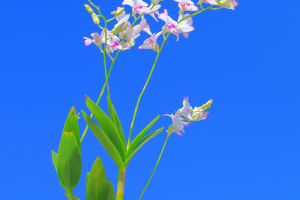In the realm of flora, Japanese Kerria (Kerria japonica) stands out as a beacon of golden warmth, heralding the arrival of spring with its radiant blooms.
This resilient shrub, native to East Asia and revered for its cheerful yellow flowers, embodies the essence of the spring sun.
In this article, we explore the captivating allure of Japanese Kerria, its botanical characteristics, cultural significance, and metaphorical connection to the revitalizing energy of the spring sun.
Botanical Characteristics
Japanese Kerria is a deciduous shrub belonging to the Rosaceae family, known for its distinctive golden-yellow flowers that adorn its arching branches in early spring. The flowers, reminiscent of delicate golden stars, brighten gardens and landscapes, signaling the end of winter's grip and the promise of warmer days ahead. The shrub typically grows to a height of three to six feet, with slender stems and dark green leaves that provide an elegant backdrop to its luminous blooms.
Cultural Significance
In Japanese culture, the blooming of Japanese Kerria holds special significance as a harbinger of spring's arrival. Known as "Yamabuki" in Japanese, the plant is celebrated for its beauty and resilience in the face of adversity, much like the Japanese spirit. Its vibrant yellow flowers evoke feelings of joy, hope, and renewal, inspiring poets, artists, and gardeners alike. Japanese Kerria has also found its place in traditional Japanese gardens, where it is valued for its aesthetic appeal and ability to thrive in various environmental conditions. Its graceful form and bright blooms make it a popular choice for adding color and texture to garden landscapes, symbolizing the transient beauty of life and the ever-changing seasons.
Metaphorical Connection to the Spring Sun
The golden blooms of Japanese Kerria serve as a metaphor for the warming rays of the spring sun, infusing landscapes with a sense of vitality and warmth after the cold, gray days of winter. Just as the sun's rays awaken dormant plants and creatures, the vibrant flowers of Japanese Kerria herald the awakening of nature from its winter slumber. The resilience of Japanese Kerria mirrors the resilience of life itself, as it emerges from the harshness of winter to embrace the promise of spring. Its ability to thrive in diverse conditions symbolizes the resilience and adaptability required to navigate life's challenges and transitions.
Horticultural Appreciation
Beyond its cultural and metaphorical significance, Japanese Kerria is also valued for its horticultural appeal. Its low-maintenance nature, drought tolerance, and ability to grow in both sun and partial shade make it a versatile addition to gardens and landscapes. Whether planted as a specimen shrub, used as a border plant, or incorporated into mixed plantings, Japanese Kerria adds a burst of color and charm to any setting.
Japanese Kerria, with its golden blooms and symbolic resonance, epitomizes the golden warmth of the spring sun. As it graces gardens and landscapes with its radiant presence, it reminds us of the cyclical nature of life and the eternal promise of renewal. Through its botanical beauty, cultural significance, and metaphorical connection to the spring sun, Japanese Kerria invites us to embrace the transformative power of nature and celebrate the joys of spring's awakening.


